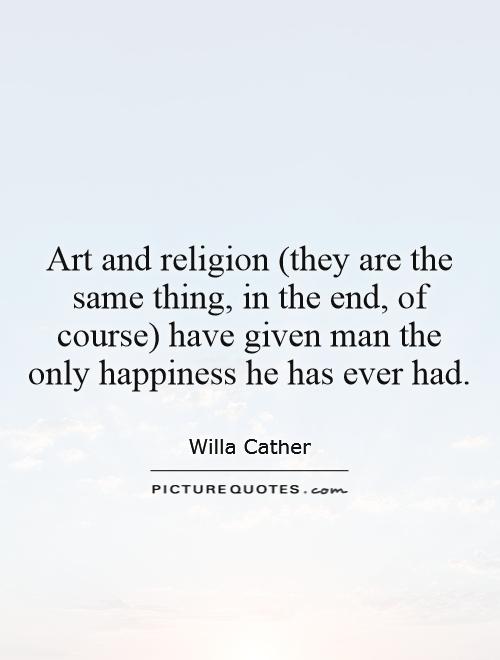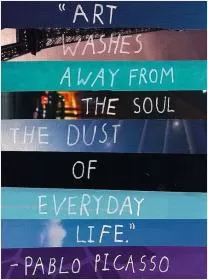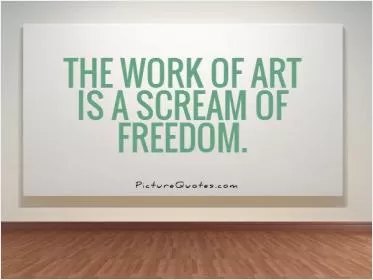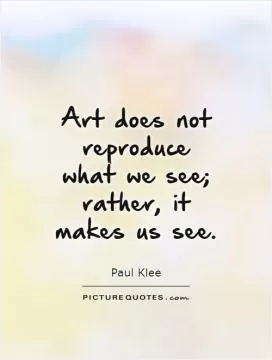Art and religion (they are the same thing, in the end, of course) have given man the only happiness he has ever had

Art and religion (they are the same thing, in the end, of course) have given man the only happiness he has ever had
Willa Cather, a renowned American author known for her vivid descriptions of the American landscape and the human experience, often explored the themes of art and religion in her works. In her novel "Death Comes for the Archbishop," Cather delves into the complex relationship between art, religion, and human happiness.Cather believed that art and religion were intertwined, both serving as sources of solace and inspiration for humanity. In her view, art and religion were the only things that could provide true happiness for individuals. This sentiment is echoed in the quote, "Art and religion (they are the same thing, in the end, of course) have given man the only happiness he has ever had."
For Cather, art and religion were not just forms of entertainment or belief systems; they were essential aspects of the human experience that provided meaning and purpose. Through art, individuals could express their deepest emotions and connect with something greater than themselves. Similarly, religion offered a sense of community, moral guidance, and a connection to the divine.
In "Death Comes for the Archbishop," Cather explores the lives of two French priests, Father Latour and Father Vaillant, who are sent to the American Southwest to establish a Catholic diocese. Throughout their journey, the priests encounter various challenges and hardships, but they find solace in their faith and in the beauty of the natural world around them.
Through her depiction of Father Latour and Father Vaillant, Cather illustrates the transformative power of art and religion in the face of adversity. Despite the difficulties they face, the priests find happiness and fulfillment in their spiritual and artistic pursuits. Through their dedication to their faith and their appreciation of the natural world, they are able to find peace and joy in the midst of chaos.












 Friendship Quotes
Friendship Quotes Love Quotes
Love Quotes Life Quotes
Life Quotes Funny Quotes
Funny Quotes Motivational Quotes
Motivational Quotes Inspirational Quotes
Inspirational Quotes